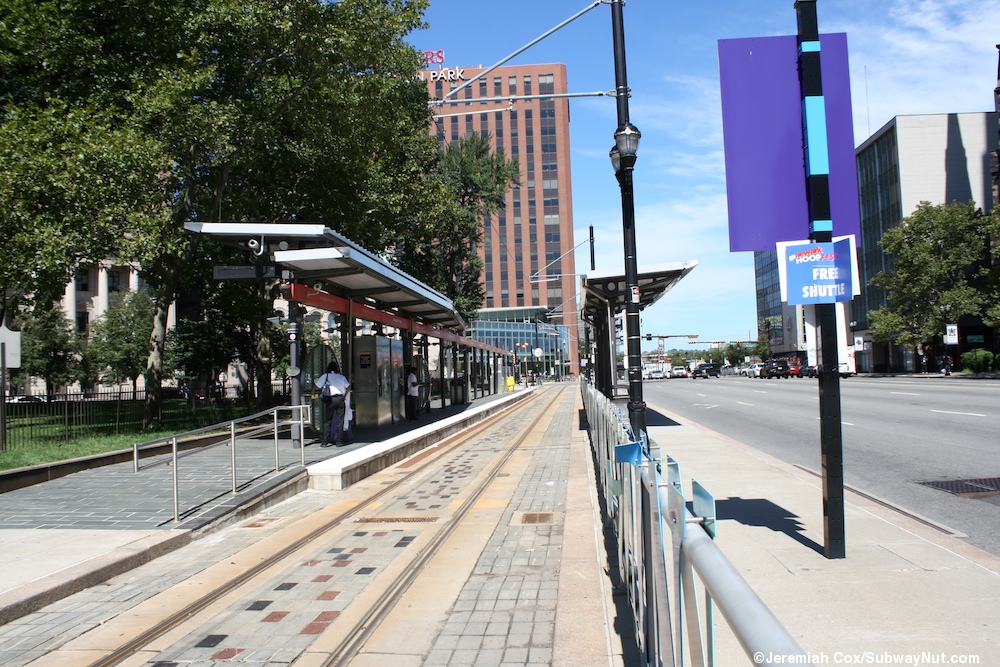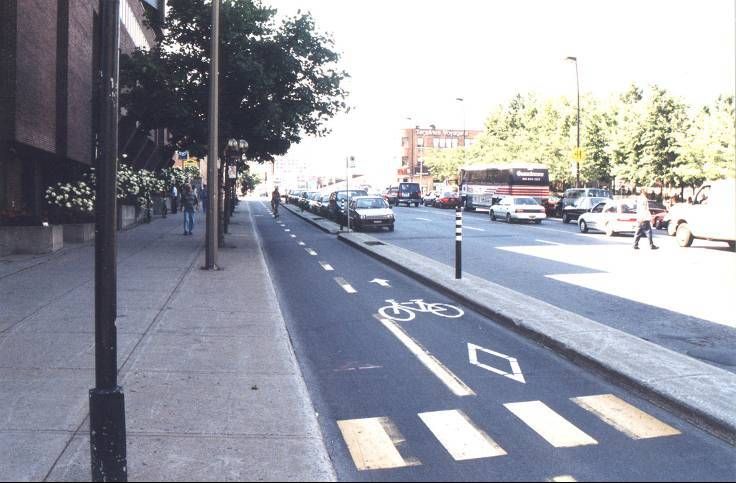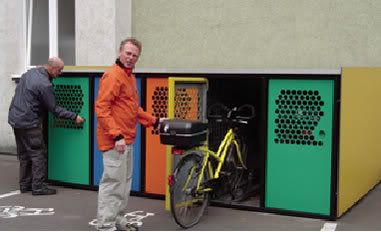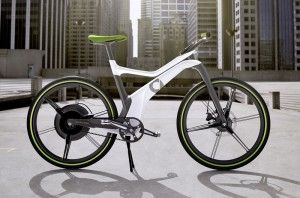(2 pm. – promoted by ek hornbeck)
 The Salt Lake Tribune adopts the familiar mode-warrior framing in comparing rail and upgraded buses, typically called “BRT” for “Bus Rapid Transit”:
The Salt Lake Tribune adopts the familiar mode-warrior framing in comparing rail and upgraded buses, typically called “BRT” for “Bus Rapid Transit”:
The Utah Transit Authority figures the many new rail lines it opened in the last three years attracted $7 billion to $10 billion worth of new development near stations as a side benefit to improving transportation. Since it spent $2.4 billion on those lines, it sounds like a good return on investment.
But a new study says governments get even more bang for their buck in revitalizing areas if they instead build “bus rapid transit” (BRT) systems. While far cheaper to construct, they attract just as much development.
… which elicits a measured response from the UTA:
The UTA says there is no need for buyer’s remorse for its new TRAX, FrontRunner and streetcar projects – because they do more than revamp areas. But UTA adds that BRT is a focus of its future plans. It is sort of a TRAX on rubber wheels where buses have exclusive lanes, passengers buy tickets from vending machines before boarding on platforms, and buses have priority at intersections.
The “odds and sods” system in the US for funding transit improvements encourages this type of mode-warrior framing … which mode delivers more:
- … bang for the buck
- … diversion of motorists to transit
- … Greenhouse Gas Emissions reduction
- … development impact
- … reduction in the annual slaughter of Americans by motorists
- … amenity to the rider
- … farebox revenue
- … (and etcetera and etcetera) …
And that framing for studies like the one that the Institute for Transport and Development Policy is presently promoting, claiming that BRT delivers 31x the bang for the buck that rail does.
If Silver Bullets Existed, We Would Really Want To Pick The Right One …
 This is not a new frame, and Yonah Freemark at The Transport Politic addressed it in 2011 in The Silly Argument Over BRT and Rail, reacting to parallel BRT vs Rail articles in the Toronto Star and Wall Street Journal:
This is not a new frame, and Yonah Freemark at The Transport Politic addressed it in 2011 in The Silly Argument Over BRT and Rail, reacting to parallel BRT vs Rail articles in the Toronto Star and Wall Street Journal:
This is a sensationalized opposition between two modes of transportation that should be thought of as complementary. There are advantages to improved bus service in some corridors, reasons to support rail in others.
What is clear is that for the majority of American cities – excluding only a few in the Northeast – buses will remain the predominant mode of public transit for most riders, even after major expansions in train networks planned for cities from Charlotte to Phoenix. So even cities that choose to invest in rail projects must also spend on the improvement of their bus lines.
Nor is the difference in costs between rail lines and BRT nearly as great as some would argue. The Journal article quotes Dennis Hinebaugh, head of a transportation center at the University of South Florida, saying “You can build up to 10 BRT lines for the cost of one light-rail line.” That might be true if you’re comparing a train operating entirely in its own right-of-way with a bus running in a lane painted on the street. But a streetcar is probably cheaper than a busway. Just ask Hartford, whose busway project will cost $60 million a mile to build.
It should surprise no-one who has seen the Great American Suck-Up Industries in action ~ the Military-Industrial Complex, the Prison-Industrial Complex or the Publicly Subsidized Private Schools racket, among others ~ that rail construction costs in the US are typically substantially higher than in other high income countries around the world.
And given the approximately $7,500 per person subsidy for the road transport system ~ between explicit subsidies, hidden subsidies, cross-subsidy and direct costs such as pollution impacts on health ~ it is no surprise that a BRT system that can tap into some share of that subsidy can come at a lower “cost to buy” for a city or region.
From the perspective of sustainable transport, neither of these are facts of life to accept. They are both problems to be solved. We must push for making mode choices based on the full economic costs of all alternatives, including the full economic cost of the “just build more roads for more cars” alternative which is often falsely treated as cost-free.
But more broadly, outside the competitive mode-choice setting for a particular project, we have to work for a transportation policy that gives cities and regions full freedom to take advantage of the naturally complementary bus and rail systems.
And, given the point that Yonah closed on, when similar claims were being pushed over two years ago, giving full freedom to take advantage of that complementarity may be most important for establishing the BRT systems that our towns and cities deserve::
The real divisions between bus and rail are political: For those who would fight for improved transit systems in their cities, the truth is that rail projects do certainly have more appeal among members of the public. Thus a billion-dollar rail project may be easier to stomach for a taxpaying and voting member of the citizenry than a quarter-billion BRT line. While the former is qualitatively different than what most car drivers are used to, the latter mode is too easily lumped in with the city bus, which car users have already paid to avoid.
Heavy Rail and BRT
 Despite the natural confusion in the US, where outmoded Federal regulations have often forced functionally unnecessary extra weight on trains operating on conventional rail corridors, the “heavy” in “heavy rail” did not originally refer to weight, but rather to the volumes of passenger trips that they provide. A single 8-car Electric Multiple Unit (EMU) most-seated “Outer Suburban” train in the Sydney Train system offers 864 seats; the 6000 series cars in the Washington DC Metro system offers 64 seats and a capacity of 175 passengers per car, so an eight car set has a capacity for 512 seated and 1,400 passengers.
Despite the natural confusion in the US, where outmoded Federal regulations have often forced functionally unnecessary extra weight on trains operating on conventional rail corridors, the “heavy” in “heavy rail” did not originally refer to weight, but rather to the volumes of passenger trips that they provide. A single 8-car Electric Multiple Unit (EMU) most-seated “Outer Suburban” train in the Sydney Train system offers 864 seats; the 6000 series cars in the Washington DC Metro system offers 64 seats and a capacity of 175 passengers per car, so an eight car set has a capacity for 512 seated and 1,400 passengers.
And for an effective mass transit heavy rail system, there should be multiple frequencies per hour … at least three or four, for “check the timetable” patronage, and ideally six or more, for “don’t check the timetable” walk-up patronage.
There are a number of large cities where there are destinations that, individually or connected into a corridor, generate sufficient demand to take up a large share of the capacity of a heavy rail train, but for many of them, the policies that have subsidized and often cases mandated sprawl suburban development means that there are no corridors through adjoining suburbans areas that can obtain sufficient origin demand based on walk-up patronage alone.
This is often addressed in the US with suburban park-and-ride stations, but large parking lots surrounding train stations themselves interfere with effective development of multi-use residential, office, retail and leisure development anchored on the station.
Connecting buses of all types ~ circulator buses, main route city buses, express buses and BRT ~ offer opportunities to collect sufficient patronage on the origin side of the peak direction / peak demand trip to offer the heavy flow of passenger trips required to justify operating and investing in the improvement of heavy rail local and regional passenger services.
And I observed in Newcastle, NSW, that connecting buses can also erode perceived stigmas of bus ridership, since “I’m catching the bus to take the train” appears as a reasonable explanation to many motorists who cannot grasp why someone with other alternatives would take the bus … after all, catching the bus to take the train means you don’t have to park at the station.
For BRT in particular, connecting with a rail line allows an opportunity for fare integration so that someone can buy a single ticket at a BRT “platform” and ride on that single ticket on the BRT and the heavy rail service to their destination.
Also, the level of passenger demand required to justify a heavy rail corridor often means that heavy rail systems emerge as hub and spoke systems. Most hub and spoke systems may be improved with well-chosen “circumference” routes that cross-connect the spokes without operating through the hub. In some settings, the circumference routes themselves offer sufficient transport demand to justify a heavy rail or light rail corridor, but given our legacy of sprawl development, many circumference routes have ceiling demand under current conditions where a BRT offers the best match of frequency and capital cost to passenger demand.
Dedicated Light Rail and BRT
 The systems most often framed as direct competitors are Light Rail systems on dedicated rail corridors and BRT systems on dedicated busways. However , while there are routes where Light Rail and BRT systems are, in fact, direct rivals, “true” dedicated corridor BRT faces a lower capacity ceiling than a Light Rail system designed with capacity expansion in mind. Consider the case of the LA Orange Line BRT System:
The systems most often framed as direct competitors are Light Rail systems on dedicated rail corridors and BRT systems on dedicated busways. However , while there are routes where Light Rail and BRT systems are, in fact, direct rivals, “true” dedicated corridor BRT faces a lower capacity ceiling than a Light Rail system designed with capacity expansion in mind. Consider the case of the LA Orange Line BRT System:
LA’s Orange Line is one of America’s most well-planned and successful BRT routes. It’s real BRT, with a dedicated busway and rail-like amenities. And it has a big problem: Just 8 years after opening, it’s hitting maximum capacity. …
More buses would add more seats, but would also disrupt the traffic signals along the line, slowing buses and causing bunching. Capacity would technically go up, but the line would slow down for everyone, and traffic on surrounding streets could get worse. …
At some point, the most effective way to increase capacity is with larger vehicles. That means rail. And at about 30,000 riders per day, LA’s Orange Line is hitting that threshold.
Does that mean it was a mistake for LA to build a busway BRT? I doubt that is the implication. It more likely means that given the way that we starve investment in more sustainable transport, LA ended up building a BRT system where it needed a higher capacity ceiling light rail system, and some other transport corridor is being served by city buses with passenger demand that investing in a BRT system. And that “missing BRT system” could quite possible be a corridor that crosses the Orange Line corridor, so that if both had been built, each would have increased the ridership of the other.
There is, after all, essentially the same complementarity between light rail rail and BRT as there is between heavy rail and BRT. And there is and additional complementarity: in smaller cities where there may be only a few corridors with sufficient patronage demand to justify building a light rail corridor, a mixed system of light rail and BRT corridors extended the reach of the network. In some cases, growth of the share of common carrier transport may push the more appealing of the BRT corridors into level of demand that justifies a light rail corridor, in which case investment in converting the busway to a rail corridor combined with extending the BRT system would use the existing BRT vehicles to extend the range of the system once the conversion of the existing busway system to rail has been completed.
Streetcar Light Rail and Electric Buses
These are some of the examples that come to many people’s minds when a “multi-mode” transport system is discussed ~ feeder route and circumference route systems with lower top-end capacity but lower up-front capital cost feeding trunk route systems with higher top-end capacity and higher up-front capital costs.
There is another version of complementarity that comes to my mind when considering the streetcar building boom.
There are urban districts in many US cities where a large share of mid-day traffic are cars that were driven into the city in the morning and will be driven out again in the evening, but are moving from one parking space to another as the driver is making a mid-day trip, whether or business or to go out for lunch (or both). And in that setting, it may be easier to gain political support for building a streetcar system that will replace that trip, so that the car that sleeps in the suburbs at night can rest in its daytime commuter or other long-stay spot during the day while the motorist avoids having to fight with city traffic and the sometimes aggravating search for a short time city parking space.
However, because “one cannot take road away from cars, even if it is to the benefit of the drivers”, these are most often built as mixed traffic streetcar systems, with cars free to drive in the same lane that has the streetcar tracks built into it.
This is a peculiarly American bit of insanity. However, whenever I see it, I recall the alternative. Instead of allowing cars in the streetcar lane, one can allow buses to drive in the streetcar lane. In many cases, low floor streetcars have the same “curb” platform height as modern low floor buses. City buses presently driving in mixed traffic would benefit substantially from access to a car-free lane in the portion of their route that would often be the source of many of their greatest risk of delay.
The sharing of facilities can go even further, however. Electric trolleybuses cannot use streetcar overhead power supply lines, because the streetcars use the metal track as a current ground return, while the trolleybuses require a second line. However, going the other direction would work. If there was a dual-wire trolley bus power feed, with both power supply and current ground return wires, then designing a streetcar pick-up that only draws power from the power supply line and has non-conducting material contacting the ground return wire would be a straightforward design engineering problem to solve.
And with recent advances in battery technology, the opportunity has emerged to design trolley bus routes with lower capital cost by operating hybrid battery-trolleybuses. The larger part of energy demand for a battery powered bus is when pulling away from a stop and when climbing climbs. At the same time, dynamic braking that feeds the power into a power grid with an existing load on it is more efficient than dynamic braking that is used to recharge a battery.
So a hybrid better-trolley bus route could be designed that only has overhead trolley wires in strategic sections of the route, on both sides of stops and climbing hills, and runs through or into the streetcar route to share a downtown dedicated common carrier transport corridor.
What makes this particularly appealing is the way that it can be implemented in incremental stages. The modification of the streetcars to isolate it from a second trolleywire connected as a ground return would allow the trolleybus ground return wire to be installed after the streetcars are already in operation. Hybrid battery-trolleybuses could begin operating as soon as that is completing, extending beyond the end of the streetcar route in urban circulator routes within the range of its battery.
Then the trolley bus system can be expanded incrementally by installing sections of overhead power supply lines to extend beyond the single-charge range of the hybrid battery-trolleybus.
Of course, for this to be cost-effective, it is essential that comparison of the Level of Service of the current car-addicted system to the new system is made on a multi-modal basis. Removing a lane shared by cars and traffic from the use of cars may reduce the level of service available to the cars, but what is important is the level of service to the people, whether they are in a car, or in some other transport vehicle, or on some other transport vehicle, or on foot.
And reducing the average number of different parking spaces each car in downtown occupies through the day, as well as diverting some trips from cars to rely entirely on some mix of common carrier transport, bikes, and walking, reduces both traffic and parking congestion in that downtown area.
BRT and Cycleways
 I would be remiss if I only considered BRT as the “lower cost, lower capacity” transport corridor, since it does not, in fact, stand at the extreme end of either spectrum. A lower capacity and much lower cost transport corridor is a dedicated cycleway. When a cycleway is protected from both traffic and parking use by cars, it is much less expensive to establish per route mile than a general right of way corridor, because it is less expensive per square foot, and because it is substantially narrower per cycle lane.
I would be remiss if I only considered BRT as the “lower cost, lower capacity” transport corridor, since it does not, in fact, stand at the extreme end of either spectrum. A lower capacity and much lower cost transport corridor is a dedicated cycleway. When a cycleway is protected from both traffic and parking use by cars, it is much less expensive to establish per route mile than a general right of way corridor, because it is less expensive per square foot, and because it is substantially narrower per cycle lane.
Now, I have experience with the multi-modal system where you park a bike in a carrier that folds down from the front of a bus. And with my various bike trunks and panniers and frame bags, every time I have my bike in that carrier, I’m constantly feeling like all of it or some part of it is going to fall off the carrier and be run over by the bus. And I have experience of several years of cycle commuting with a folding bike. But if a cycleway runs to or past a BRT corridor, for many people the ideal multi-model system would be a set of cycle lockers like these.
 I would, indeed, like a version of these for a regular city bus route, in which a hanging bike locker forms the back of a bus shelter, with the bench and sun/rain shelter an integral part of the unit, and the bike locker is “free parking” for any bike registered with the local transit authority. In that system, the user would provide the padlock, with a second Transit Authority lock built into the padlock baseplate to remove abandoned or unregistered bikes.
I would, indeed, like a version of these for a regular city bus route, in which a hanging bike locker forms the back of a bus shelter, with the bench and sun/rain shelter an integral part of the unit, and the bike locker is “free parking” for any bike registered with the local transit authority. In that system, the user would provide the padlock, with a second Transit Authority lock built into the padlock baseplate to remove abandoned or unregistered bikes.
But these cycling lockers are a particularly appealing option for a system with the frequency and capacity of a good BRT system, which has bus stops that more closely resemble light rail platforms than common city bus stops, and would offer a capacity to rent the locker out by the day, week, or month.
Besides the benefit that bus does not have to wait for the cyclist to take the bike out of a locker, as it does for the bike frame in the front of the bus, the locker system also offers the benefit that the cyclist does not have to worry about what connecting service they may be taking and what the cycle carriage policy of that connecting service may be. Consider multi-modal system with each of the parts discussed today. The ordinary city bus may have that frame, but due to the delays they imply for what should be an express trunk service, a trolleybus may not. There may be hanging bike hooks in the light rail cars, but not in heavy rail cars, or the other way around. Roll-on bike carriage may be allowed on both light and heavy rail (often at an extra fee during peak transport times), but not on streetcars.
 Having the bike securely locked in the cycle locker at the original BRT platform means that the cyclist does not require any additional capacity wherever else he or she is located in the multi-modal transport system.
Having the bike securely locked in the cycle locker at the original BRT platform means that the cyclist does not require any additional capacity wherever else he or she is located in the multi-modal transport system.
Also, having the bike securely locked in the cycle locker encourages the use of ebikes and, indeed, some of the bike lockers may be equipped to recharge ebikes stored in the locker, for an addition to the rental fee, effectively doubling the range of an ebike in connecting to the BRT system.
Conversations, Considerations and Contemplations
It is quite tempting to adopt an either-or frame when advocating for the adoption of some particular transport service. As we can see from the coverage of the BRT vs Light Rail study by the Institute for Transport and Development Policy, that framing is easily understood and easily written up by increasingly over-stretched paid reporters for our traditional media. It is, indeed, very similar to the “horse race” coverage of the implementation of the shift of roughly 1/20th of our health care system from private to public funding, with all the complexities and problems that attend a policy of patching and propping up of a system that has already entering into a process of collapse.
However, no matter how strongly I favor one or another solution for some specific problem, I try to remember that there are no silver bullets. And if there is no silver bullet, there is no answer to the question, “which is the best system in general”?
We should not be looking for the best system “in general”. The best system will emerge from coming up with solutions that work well for the specific set of transport services they are providing.
So rather arriving at an answer to what is so often a silly question, I now open the floor to the comments of those reading.
If you have an issue on some other area of sustainable transport or sustainable energy production, please feel free to start a new main comment. To avoid confusing me, given my tendency to filter comments through the topic of this week’s Sunday Train, feel free to use the shorthand “NT:” in the subject line when introducing this kind of new topic.
And if you have a topic in sustainable transport or energy that you want me to take a look at in the coming month, be sure to include that as well.

1 comment
Author